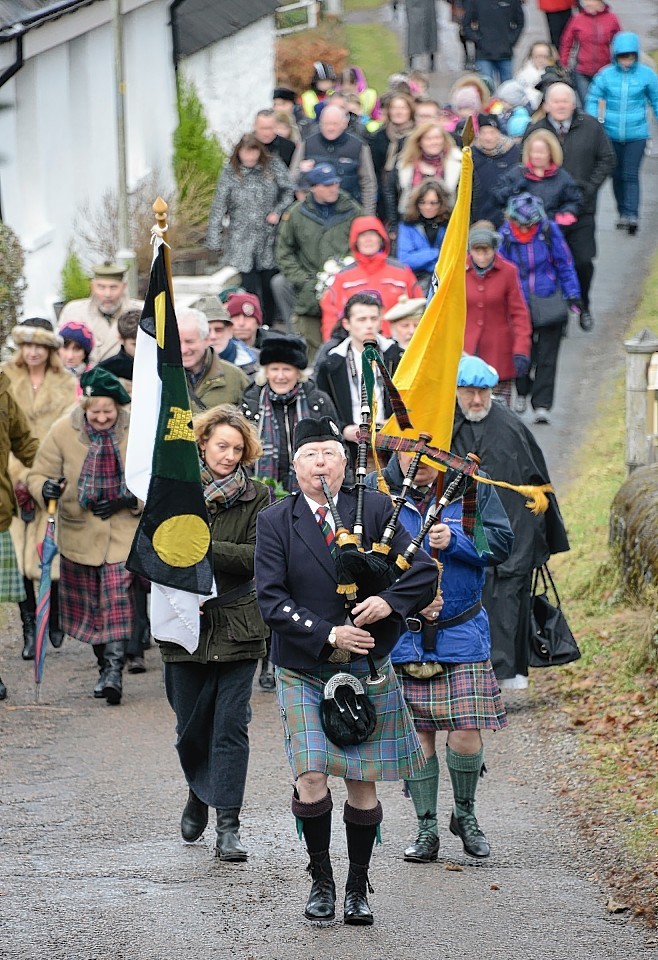The 324th anniversary of the notorious massacre of Glencoe was marked on Saturday with a moving ceremony.
In 1692, 38 members of the MacDonald clan were killed in their beds by government soldiers.
Captain Robert Campbell led the attack after the clan would not pledge allegiance to King William. And dozens more perished in the freezing cold after running from the troops.
Members of the MacDonald clan gathered on Saturday to remember their ancestors who died.
A service was held at 11am in St Mary’s Episcopal Church in Glencoe, followed by the traditional march from Bridge of Coe to the memorial cross at noon.
The Rev Simon McKenzie officiated and wreaths were laid by various organisations.
Rosalyn McDonald of the Glencoe Heritage Trust said: “It went very well. They weather was good, it was sunny and dry.”
The organisations who were represented at the ceremony were the Glencoe Heritage Trust, Clan Donald Highlands and Islands, the National Trust for Scotland, and the Clan Donald Centre on Skye.
Brigadeer John MacFarlane of Taynuilt gave a rendition in Gaelic.
The wreath from the Glencoe Heritage Trust was sponsored by John Reynolds in memory of his friend Robert Chessman, who was a commissioner of Clan Donald in the USA.
The memorial cross site has recently been beautifully renovated by volunteers.
NTS archaeologists will carry out a survey of the remains of a turf house building, which is believed to date from the 17th century, and may be linked to the Massacre of Glencoe this week.
The turf house was found at Achtriochtan, near the loch, during a routine inspection of other archaeological sites in the area.
The Trust’s Head of Archaeology, Derek Alexander said: “We were very excited to discover these remains. Most of the archaeological sites in the glen are stone-built structures, likely to date to after the agricultural changes of the mid-18th or 19th century.
“It is impossible to provide a precise date for the Achtriochtan structure from their surface remains alone.
“But, by carrying out a detailed drawing of the site and undertaking a comprehensive photographic record, we will provide a basis for any future research.”
